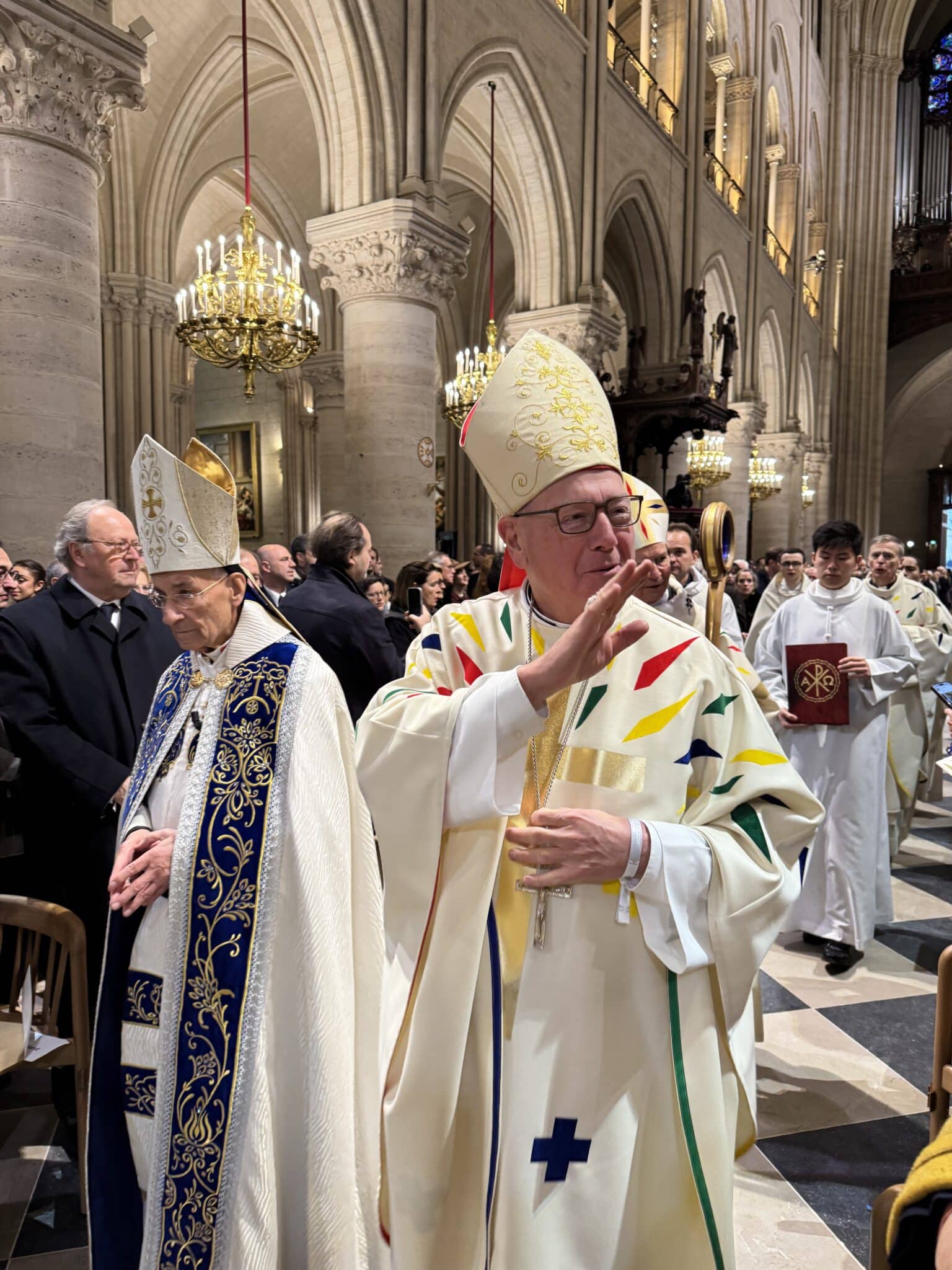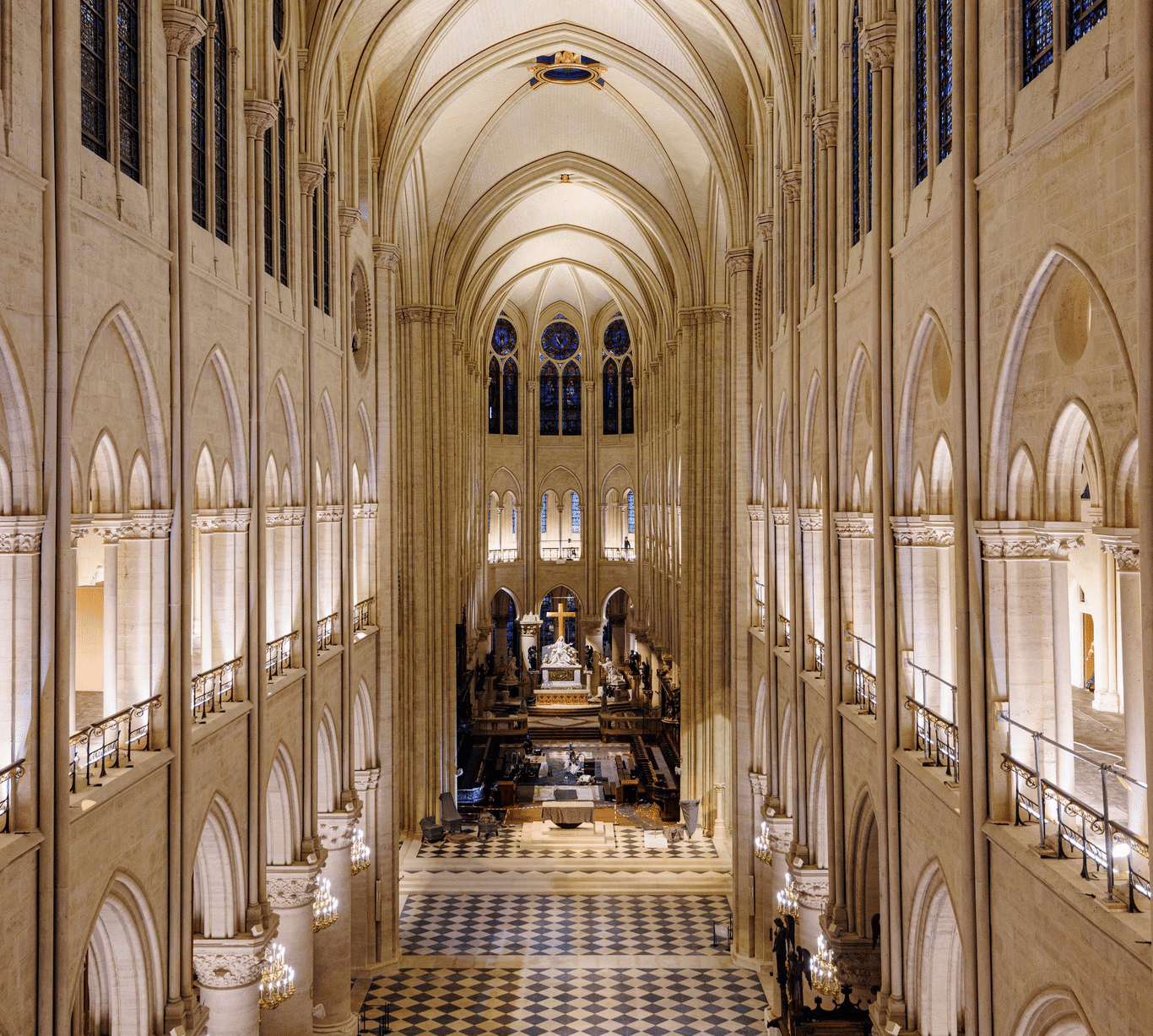One of the most famous features of Notre-Dame de Paris is her bells. They faithfully mark the hours and ring out to commemorate significant occasions.
How much do you know about Notre-Dame Cathedral’s bells?
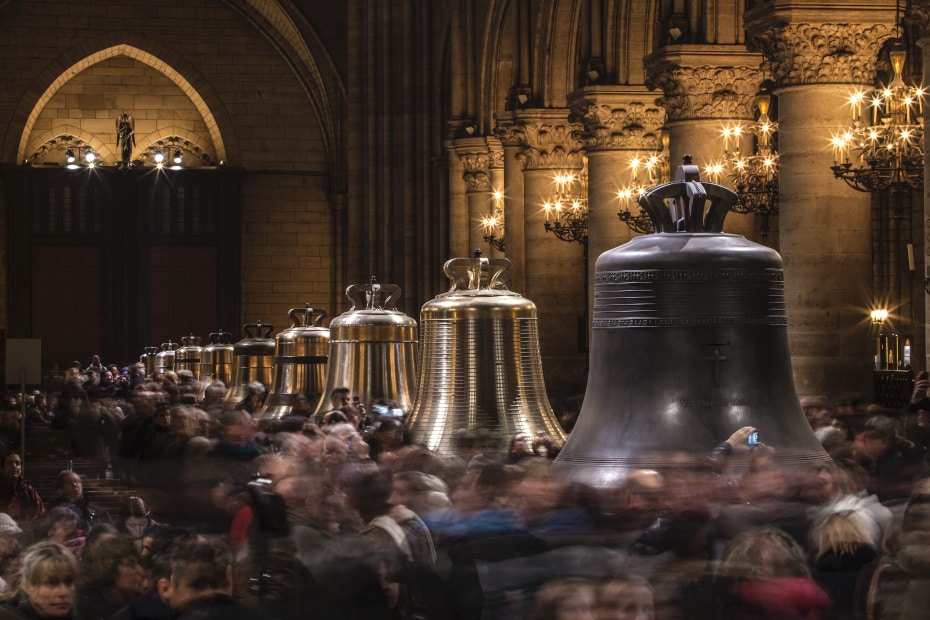
Notre-Dame Cathedral has 10 bells, of which, the “bourdon” dates back to the 15th century. The bourdon is the heaviest bell and produces the lowest tone. It was recast in 1681, upon the request of King Louis XIV, who named it the “Emmanuel” bell. This bell, considered one of the most beautiful in Europe, rings in F sharp.
During the French Revolution in 1791 and 1792, all the bells, except for Emmanuel, were lowered, broken, and melted down for ammunition by the revolutionaries. In 1802, by order of Napoleon I, Emmanuel was replaced in its tower. Throughout the later part of the 19th century, several of the bells were recast and installed in the North and South Towers, the spire, and the roof.
However, due to the poor quality of the metal used in the four bells of the North Tower, there were harmonic discrepancies and poor overall acoustic quality. As a result, the bells were all replaced in 2013, except for Emmanuel, who retained its renowned, excellent sound. The Cornille-Havard foundry in Villedieu-les-Poêles produced the bells for the North Tower, and the bourdon for the South Tower was produced at the Royal Eijsbouts foundry in the Netherlands.
All of the bells bear a first name in homage to the personalities who have shaped the life of the diocese and the Church. Notre-Dame Cathedral’s South Tower houses Marie, whose first name pays homage to the mother of Christ, protector of Notre-Dame Cathedral, and memorializes the first bourdon Marie that was in place between 1378 and 1792.
The North Tower houses:
- Gabriel, in homage to the angel Gabriel of the Annunciation. The largest bell in the North Tower also bore this name in the 15th century.
- Anne-Geneviève, in memory of Saint Anne, mother of Mary. And of Saint Geneviève, patron saint of Paris.
- Denis, in honor of Saint Denis, first bishop of Paris.
- Marcel, in honor of Saint Marcel, ninth bishop of Paris in the 5th century.
- Étienne, in memory of the old cathedral church of Paris placed under the protection of Saint Etienne.
- Benedict-Joseph, in remembrance of Benedict XVI, pope at the time of their consecration in 2013, during the 850th anniversary of Notre-Dame de Paris cathedral.
- Maurice, in memory of the bishop of Paris, Maurice de Sully who laid the first stone of the cathedral in 1163.
- Jean-Marie, in homage to Cardinal Jean Marie Lustiger, 139th Archbishop of Paris, from 1981 to 2005.
The bells weigh between two and three tons each. For centuries, they marked the hours and key moments in the life of the Church and history of Paris as well as for the Cathedral’s Christmas, Easter, and Ascension celebrations. The Emmanuel bell, in particular, has tolled to mark major events in the history of France such as the coronations of French kings, Papal visits, and to mark the end of major conflicts including World War I and World War II. It has also rung in somber times to unite the community, such as the funerals for French heads of state and tragedies such as the Twin Tower attacks on September 11, 2001.
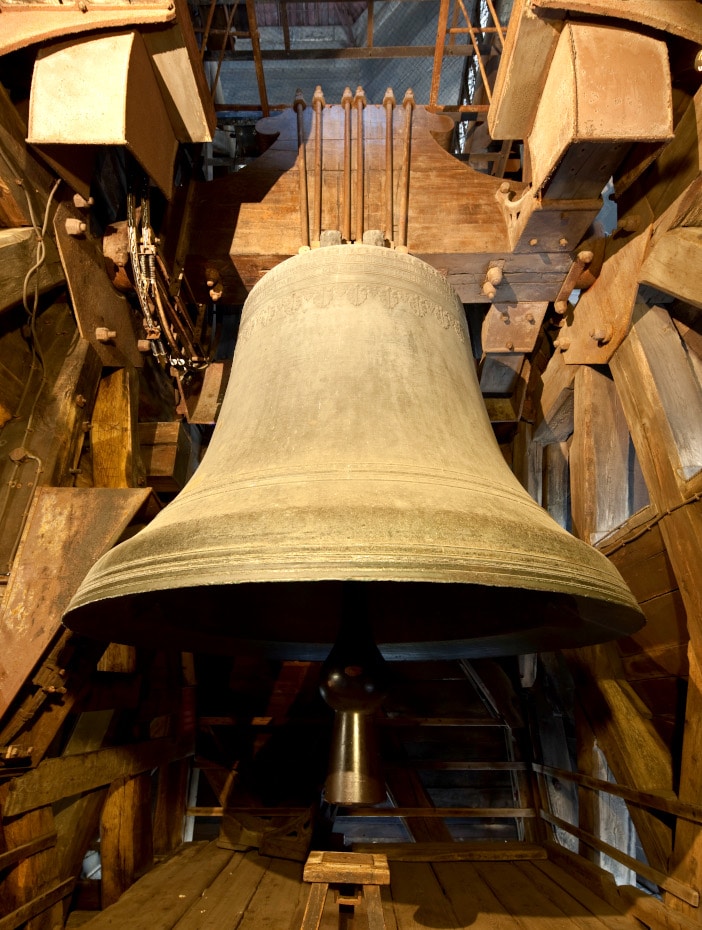
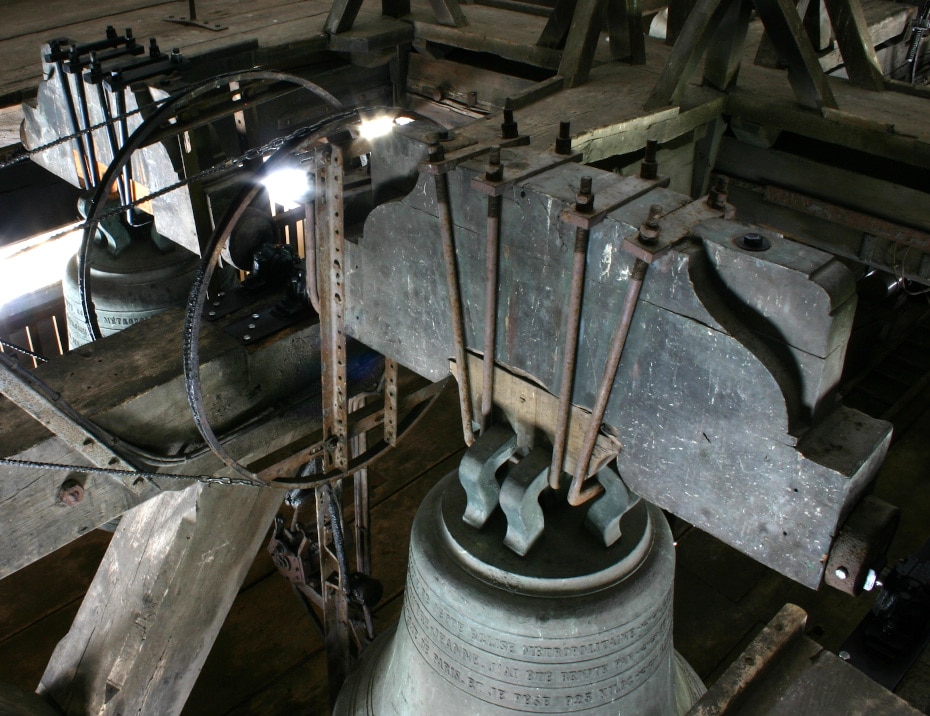
The bells survived the fire in April 2019 and today are still hanging in the bell towers as the cathedral undergoes restoration. They are undergoing cleaning and were rung on the 1-year anniversary of the fire.
To learn more about the history of Notre-Dame de Paris, and track the restoration progress, sign up for our newsletter!

